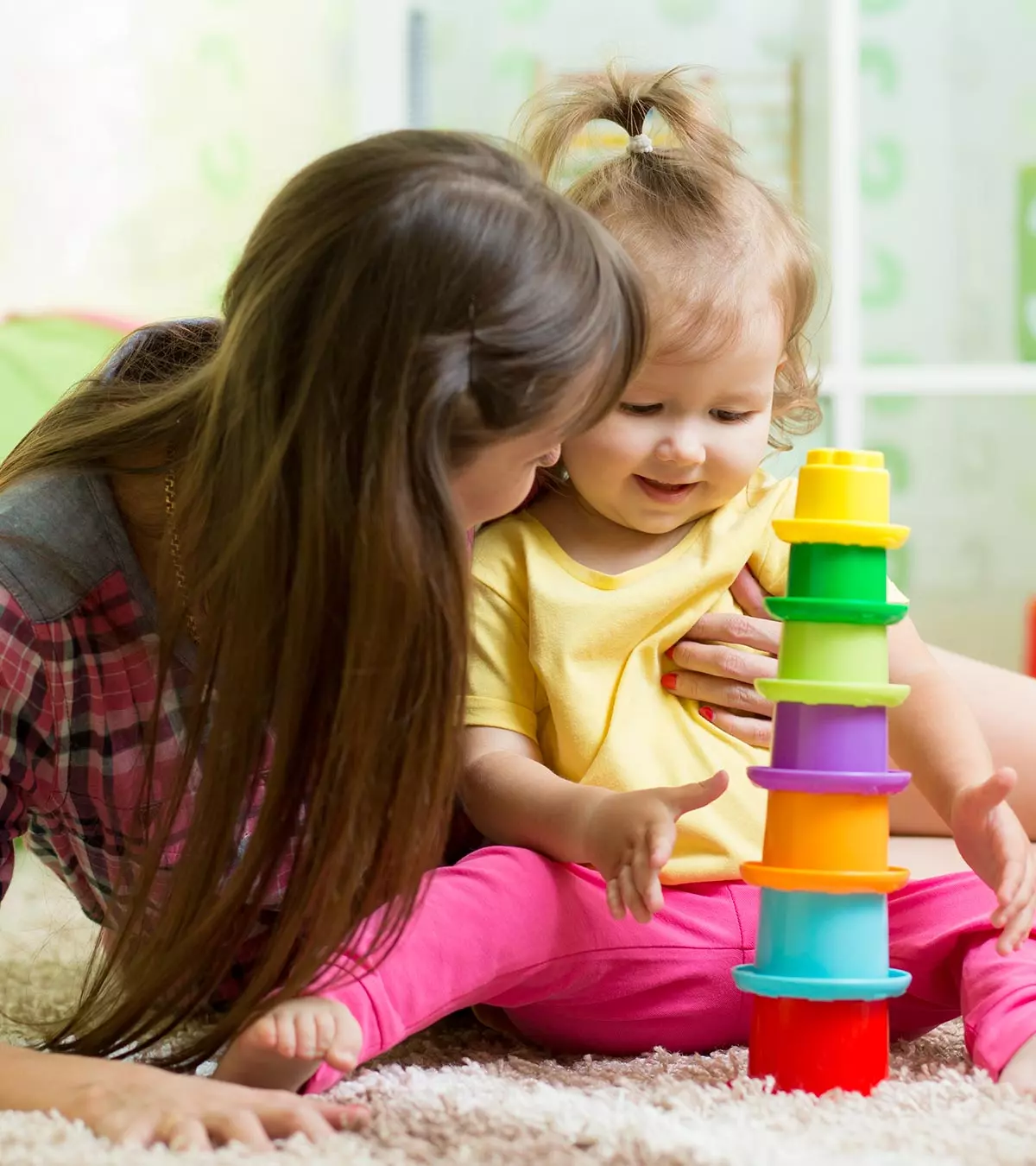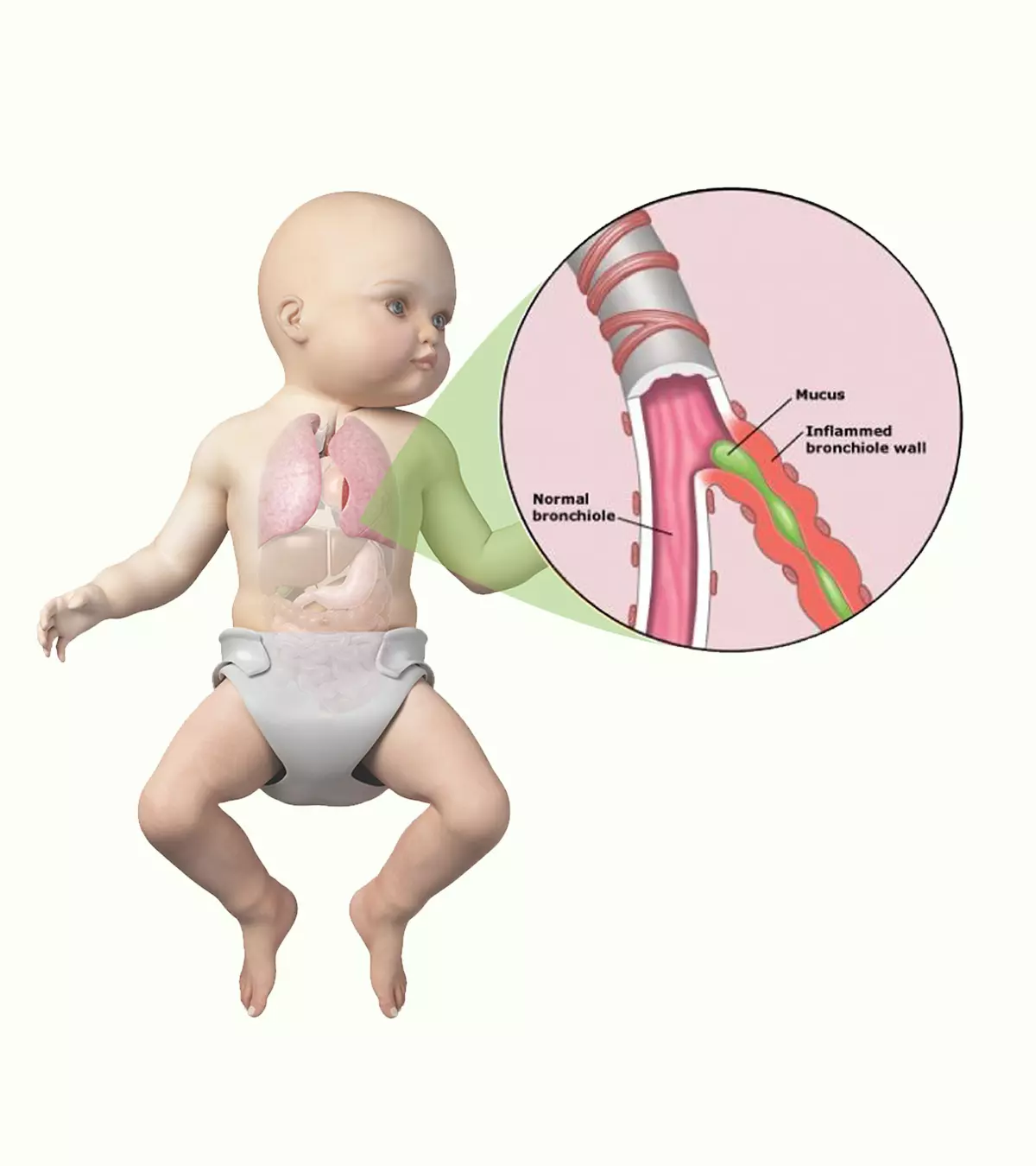

Image: iStock
Smacking is a form of corporal or physical punishment where the flat inside part of the hand is used to cause pain or discomfort to a child in response to their behavior.

Smacking children may seem to work because they generally stop what they are doing as soon as they get smacked. However, smacking is not the right way to enforce discipline. Children do not imbibe self-control, self-discipline, or appropriate behaviors in this manner.
This post explains what effects smacking may have on children and whether it is legal. It also discusses a few positive techniques you could use instead to discipline children.
Is Smacking Your Child Illegal?
Corporal punishment is a widely debated topic among parents, parenting experts, and psychologists. It is legal in the home in all the states in the US on the federal level and is still lawful in public and private schools in 19 states. Corporal punishment is unlawful in public schools in 31 states and the District of Columbia. In Iowa and New Jersey, it is unlawful in both public and private schools(1).
It is worth noting that among all the countries across the globe, Sweden was the first to ban smacking in 1979, followed by Germany in 2000, New Zealand in 2007, Brazil in 2014, and Argentina in 2016 (2). In India, corporal punishment is banned in schools but not defined for home set-up.
The American Academy of Pediatrics (AAP) in 2018 and the American Psychological Association (APA) in 2019 released similar statements calling for educating parents about positive and effective parenting strategies and eliminating physical and humiliating punishment, including verbal abuse (1).
Why Are Experts Against Smacking A Child?
There are some major drawbacks of smacking children (3). It may
- Hurt the child physically.
- Make children believe that smacking or hitting is acceptable behavior while dealing with strong feelings and difficult situations.
- Lead to long-term problems related to children’s health and overall development. Children who are smacked are more likely to show aggression, challenging behavior, bullying, depression, low confidence, and feelings of guilt and shame.
Additionally, children who get smacked may feel anger, fear, confusion, and sadness when smacked. They may also stop trusting their parents. Children may not understand why they are being smacked or what they have done wrong and may believe that the parent is angry and does not like them.
Although smacking can appear to give immediate results, it has long-term consequences and is ineffective because of the following issues (4) (5):
- Increases aggressive behavior: Smacking may worsen your child’s behavior and increase aggression. Several studies have shown that children who get smacked are more likely to hurt or hit other people. This happens because when smacking, parents model behavior that makes children believe violence is the solution to their problems.
- Leads to bullying: Smacking may make children feel that the parents have power over them. They may also rely on such behavior to demonstrate their control and power over others, leading to bullying, violence, or other behavioral problems.
- Loses effectiveness over time: Experts believe that like time-out, smacking also loses its effectiveness eventually. When smacked, children do not learn about making the right choices and, therefore, eventually, this practice stops being a deterrent for their behavior.
- Damages parent–child relationship: A healthy parent–child relationship is based on trust, security, safety, and stability. A healthy relationship helps the child develop skills that enable them to manage their own behavior. Any type of physical abuse, including smacking, damages that relationship and makes it more challenging to control the child’s behavior.
- Leads to mental health disorders: Experts believe that children who are subjected to corporal punishment, such as smacking, spanking, and pushing, are more likely to develop mental health disorders. A study demonstrated that physical punishment/abuse increases the chances of anxiety disorders, substance abuse, mood disorders, and personality disorders.
Ways To Discipline A Child Without Smacking
One of the best ways to avoid situations that may lead to the urge to smacking is by creating an environment and opportunities that help children behave acceptably and appropriately. Let us have a look at a few of the effective ways and tips for disciplining children (3).
- Set family rules: Make the rules clear and articulate about acceptable behavior in the house. Family rules help a child know what is expected of them and also help you avoid difficult situations.
- Examine the child’s environment: Assessing a child’s environment can give you an idea of what is going on with them and how it affects their behavior. It can also help you control challenging situations.
- Take away certain privileges: Cut down screen time or electronics use for a limited period or reduce pocket money when they misbehave. On the contrary, take them out for ice cream or set an evening aside for a movie of their choice when they behave well.
- Give time-out: When children show certain behavior, such as tantrums and throwing things around, you need to calm the child down with a firm tone. Let them sit by themselves and stop them from doing an ongoing activity so that they can reflect on their behavior. However, to make it effective, you need to warn them that bad behavior will lead to certain consequences.
While giving time out, keep in mind the child’s age and length of time-out — it should neither be too long nor too short and should usually work well for a younger child. If the child refuses time-out, you can take away a privilege.
- Start reward charts: Reward your child spontaneously for good behavior and reduce it for unwarranted behavior so that they can establish the difference between good behavior and bad behavior and know that both have consequences.
Make a chart where your child can see how many stars/rewards they have accumulated to keep them motivated for good behavior. Once the target number of stars is achieved, they can be treated with ice cream, extra story time, or extra time in the park.
- Control your emotions: Set an example for your child and create a positive and loving environment for them. If you can manage your anger or frustration by staying calm, taking a few deep breaths, or just walking away, the child may also model the same behavior.
Frequently Asked Questions
1. At what age can the child be smacked?
Smacking should be avoided irrespective of the child’s age. You may instead try a consequence-based approach or use simple rules from an early age to discipline the child (3).
2. How do I stop smacking my children?
It is best to maintain calm whenever you sense losing patience due to your child’s unruly behavior. Keep your child in a safe place and have your family member or partner attend them for a while until you feel better (3).
Smacking children and harsh parenting could negatively affect a child’s mental health in the long run. Although smacking is not unlawful in-home setups, pediatric associations recommend following positive parenting strategies and eliminating any physical or verbal humiliation to children. Physical punishments lose effectiveness over time, and this may cause children to become more aggressive and disobedient. This may also damage parent-child relationships and often trigger anxiety or personality disorders. Setting some family rules, positive rewards, taking away privileges, etc., are good strategies to enforce good behavior in children.
Key Pointers
- Smacking, a corporal punishment for children, is illegal in many countries in school and home settings.
- It may cause physical injury to the child and, in the long run, make violence and aggression an acceptable behavior to cope with anger.
- Setting rules, giving a timeout, or maintaining a reward chart are some effective ways to instill discipline in children.
References
1. Country report for the USA; Global Initiative to End All Corporal Punishment of Children
2. Cuddy E and Reeves R V; Hitting kids: American parenting and physical punishment: The Brookings Institution (2014).
3. Smacking: what you need to know: Raising Children Network
4. Durrant, J and Ron Ensom; Physical punishment of children: Lessons from 20 years: Canadian Medical Association Journal (2012).
5. Afifi, T. O., Mota et al.; Physical punishment and mental disorders: results from a nationally representative US sample: Pediatrics (2012).
Community Experiences
Join the conversation and become a part of our nurturing community! Share your stories, experiences, and insights to connect with fellow parents.
Read full bio of Shreshtha Dhar
Read full bio of Bhavana Navuluri















